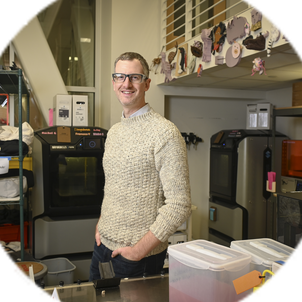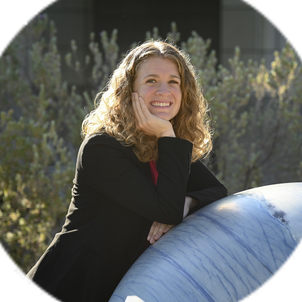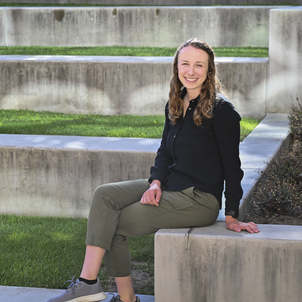He was a professor of mechanical engineering at the University of Arizona, and had a real love of learning. I followed him into mechanical engineering because, like him, I liked that it was very foundational and that I could learn a lot of fundamental principles that could be applied to so many different things across a wide array of disciplines.
My interest has always been in using mechanical engineering for medical applications. As an undergraduate at MIT, I studied the scaffolding structure of biomaterials being developed to help with wound healing, and designed a body weight support system for people re-learning how to walk. During my postdoctoral work at Caltech, I expanded my understanding of biology and developed an interest in learning how to control living systems for medical purposes. I was really excited when I was offered a position in the Mechanical Engineering Department at Stanford, because it’s so interdisciplinary.
Today I use mathematical modeling and control theory – which is a type of applied math – to study synthetic biological and biomedical systems. It turns out that some of the approaches we use in electrical and mechanical system design can also be used when it comes to re-engineering genes. In a synthetic biological system, gene fragments can be combined to create a gene with a specific function. If that gene is read correctly by the cell, the cell can perform a task based on what it reads, much like you can combine parts to create a new mechanical device with specific functions. We can represent reactions between genes and molecules within the cell as mathematical equations, and use modeling to try to predict and design the responses we want the cell to have.
One of the questions I’m looking at is whether synthetic biology might allow us to use the cells in the human body as diagnostic and therapeutic devices. For example, could bacterial “microrobots” in our gut be engineered to identify and target a particular infection when it occurs, to populate and attack that infection in some way, and then retreat? Advances like this could potentially create a new frontier for biomedical therapeutics.
Another question I am trying to solve is whether there is a way for us to look at the human body as a machine or a dynamic system and develop models that would help us better understand our biology and treat ailments. In mechanical and electrical systems, we have Newton’s Laws of Motion, and we have Ohm’s Law, which are fundamental to mechanical and electrical fields. But I feel like we don’t currently have those same fundamental principles in the biological or synthetic biological fields. I aim to use my mechanical engineering background to conceive frameworks for understanding and eventually rebuilding biological systems.
I love what I’m doing, but there are always going to be challenges. I remember I once had a teacher who told me he didn’t think I could have a career in engineering or in math, and this was when I was at the top of his class. You shouldn’t let others, no matter their role, block you from pursuing something you’re interested in, because nobody is infallible. You know yourself better than anyone else, and you have to trust in yourself.
Related spotlights

Dan Somen

Sonia Martin


